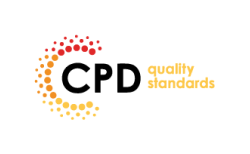About This Course
Course Curriculum
-
Module 01: Course and Instructor Introduction
00:03:00 -
Module 02: How to make the best of this course
00:02:00
-
Module 01: What is REST?
00:06:00 -
Module 02: Why REST
00:08:00 -
Module 03: What and Why DJango REST Framework
00:06:00
-
Module 01: Install DJango
00:03:00 -
Module 02: Install DJango REST Framework
00:01:00 -
Module 03: Install MySql and MySql workbench
00:03:00 -
Module 04: Launch MySql workbench
00:02:00 -
Module 05: Install python mysqlclient
00:01:00 -
Module 06: Install ATOM
00:03:00 -
Module 07: Install Postman
00:01:00
-
Module 01: Create the Project
00:03:00 -
Module 02: Create a view
00:02:00 -
Module 03: Configure the URL and TEST
00:03:00 -
Module 04: Create app level urls
00:02:00 -
Module 05: Create a model class
00:03:00 -
Module 06: Configure the database and run migrations
00:03:00 -
Module 07: Use the model in the view and test
00:03:00
-
Module 01: DRF Components
00:06:00 -
Module 02: Function Based Views
00:05:00 -
Module 03: Serializers
00:04:00 -
Module 04: Create the Project
00:02:00 -
Module 05: Create the Model
00:02:00 -
Module 06: Create the Serializer
00:02:00 -
Module 07: GET single student
00:04:00 -
Module 08: Create Student
00:04:00 -
Module 09: Implement Non Primary Key Based Operations
00:07:00 -
Module 10: Use @api_view
00:01:00 -
Module 11: Configure the URLs
00:02:00 -
Module 12: Test
00:07:00 -
Module 13: Test Using Postman
00:04:00
-
Module 01: Introduction
00:03:00 -
Module 02: Create the Project
00:03:00 -
Module 03: Implement Non Primary Key Based Operations
00:06:00 -
Module 04: Implement Primary Key Based Operations
00:07:00 -
Module 05: Configure the URLs and TEST
00:04:00
-
Module 01: Introduction
00:05:00 -
Module 02: Non Primary Key based operations
00:04:00 -
Module 03: Primary Key based operations
00:02:00 -
Module 04: Configure the URLs and TEST
00:02:00
-
Module 01: Generics
00:03:00 -
Module 02: Generics in action
00:03:00
-
Module 01: Introduction
00:03:00 -
Module 02: Create ViewSet
00:02:00 -
Module 03: Configure URLs and Test
00:04:00
-
Module 01: Create the project
00:02:00 -
Module 02: Create model
00:03:00 -
Module 03: Create Serializers
00:04:00 -
Module 04: Create REST endpoints
00:03:00 -
Module 05: Configure URLs
00:02:00 -
Module 06: Test
00:03:00
-
Module 01: Introduction
00:06:00 -
Module 02: Pagination in action
00:05:00 -
Module 03: Pagination at class level
00:03:00 -
Module 04: Using LimitOffsetPagination
00:01:00
-
Module 01: Introduction
00:04:00 -
Module 02: Authentication in action
00:03:00 -
Module 03: Authorization in action
00:06:00 -
Module 04: Global Security
00:04:00
-
Module 01: Usecase
00:01:00 -
Module 02: Create the Project
00:01:00 -
Module 03: Create Model Classes
00:03:00 -
Module 04: Create Reservation Model
00:01:00 -
Module 05: Create Serializers
00:01:00 -
Module 06: Create ViewSets
00:02:00 -
Module 07: Configure the Router
00:02:00 -
Module 08: Run Migrations
00:01:00 -
Module 09: Initial round of testing
00:04:00 -
Module 10: Implement findFlights endpoint
00:03:00 -
Module 11: Test findFlights
00:05:00 -
Module 12: Implement Save Reservation
00:06:00 -
Module 13: Test Save Reservation
00:04:00
-
Module 01: In-Built Validations
00:04:00 -
Module 02: Allowing Blank and Null Values
00:02:00 -
Module 03: Create Custom Validator
00:05:00 -
Module 04: Two more ways
00:07:00
-
Module 01: Introduction
00:03:00 -
Module 02: Configure Token Auth
00:05:00 -
Module 03: Create Users and Token
00:04:00 -
Module 04: Token Auth in action
00:03:00 -
Module 05: Automate Token Creation
00:09:00
-
Assignment -Django Rest Framework

 Development
Development QLS
QLS Business
Business Healthcare
Healthcare Health & Fitness
Health & Fitness Technology
Technology Teaching
Teaching Lifestyle
Lifestyle Design
Design













